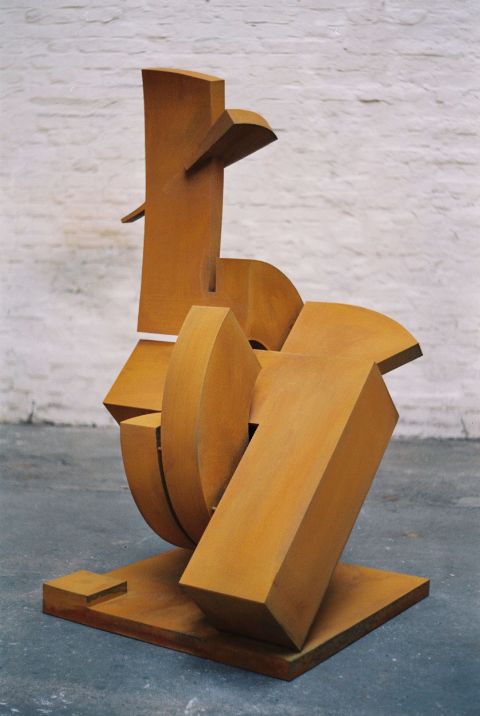Songhak Ky

Songhak Ky, Begegnung (1995). Photo: Songhak Ky, courtesy of Linda Ky
As one of the few Cambodian exchange students in the German Democratic Republic (GDR) studying arts and design rather than engineering, Songhak Ky came to the faculty of metal and enamel work at the Hochschule für Industrielle Formgestaltung (Academy of Industrial Design) Burg-Giebichenstein Halle an der Saale in 1972. He joined the Verband Bildender Künstler der DDR [Association of visual arts of the GDR] in 1981 and participated in many state-funded group exhibitions such as at the Staatliche Galerie Moritzburg, Zentrum für Bildende Künstler Neubrandenburg, and Zentrum für Bildende Künstler Dresden. He fled to West Germany in 1987, having been granted citizenship there, joining his wife and daughter, with whom some of his works remain. Ky’s generation attempted to bridge the figurative culture rooted in South East Asian, particularly Cambodian, craftsmanship with the ‘European/Western’ constructivism of Bauhaus—the design ideology led by the Academy Burg Giebichenstein at the time. Made during or after the fall of the GDR, his later works use less colour and enamel, embracing the raw texture of metal, fluidity, and a more human-like scale. In addition, the artist also made a few smaller, lesser-known pieces following his vision as product designer, such as a kettle, a candle holder, as well as jewellery.
Begegnung [Encounter] (1995) was initially created for his Kreuzung [Crossroad] series, attempting to render the encounter between East and West in sculptural language. It features a quasi-abstract quality of bodies merging and colliding into each other, in sharp contrast to the metal’s often rigid and architectural character. Like many Cambodians who remained abroad during the Khmer Rouge period (1975–79) never to return, his works, corroded through time, survived political turmoil in Germany, and were left untouched by the genocide and destruction of so-called bourgeois art in Cambodia. It remains largely unknown to the Cambodian contemporary arts canon until now, perhaps due to the country’s complicated relationship with its communist past and the fact that Ky himself remained in Germany until his death.
Work in the exhibition: Begegnung [Encounter] (1995), corroded metal sculpture, 165 × 90 × 90 cm. Courtesy of the Ky family